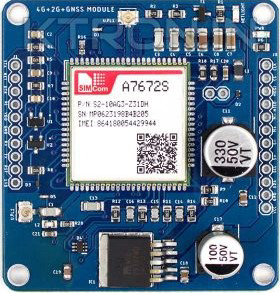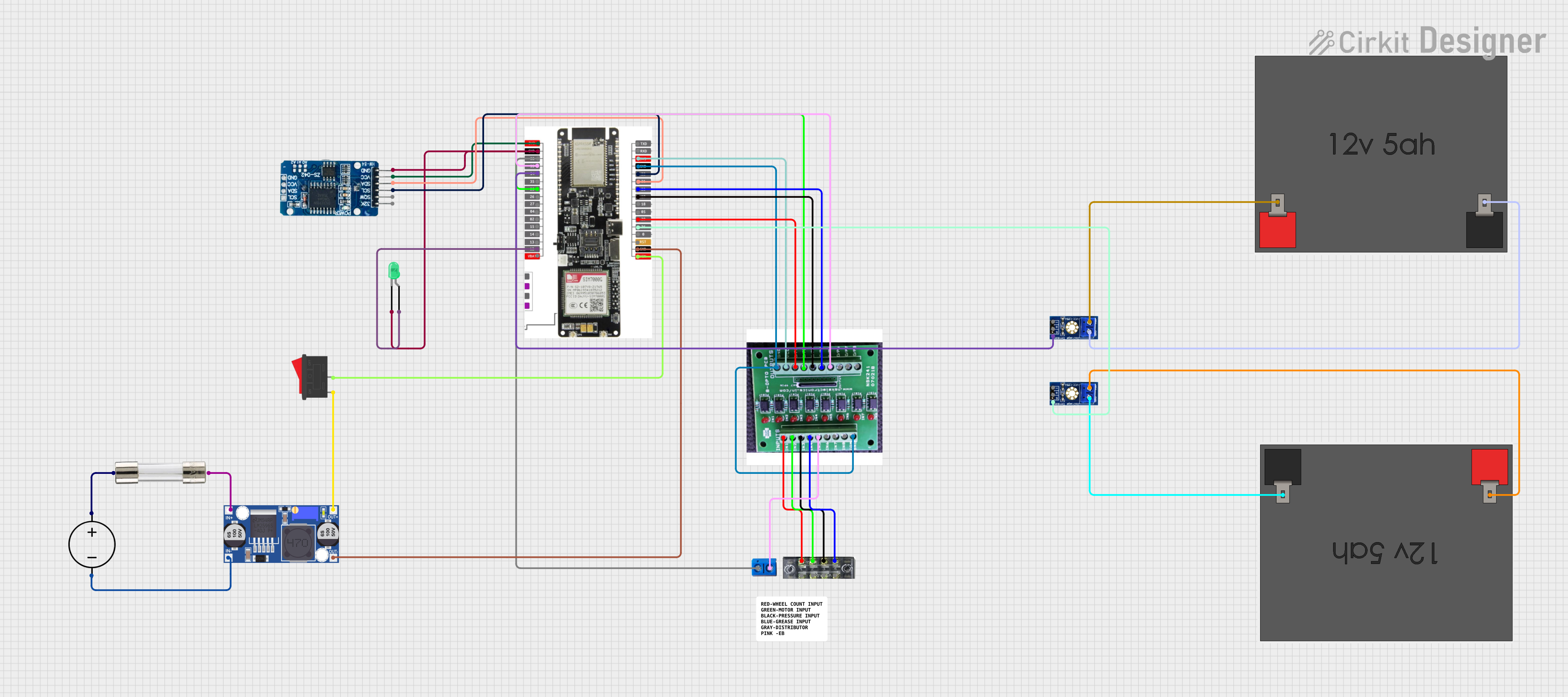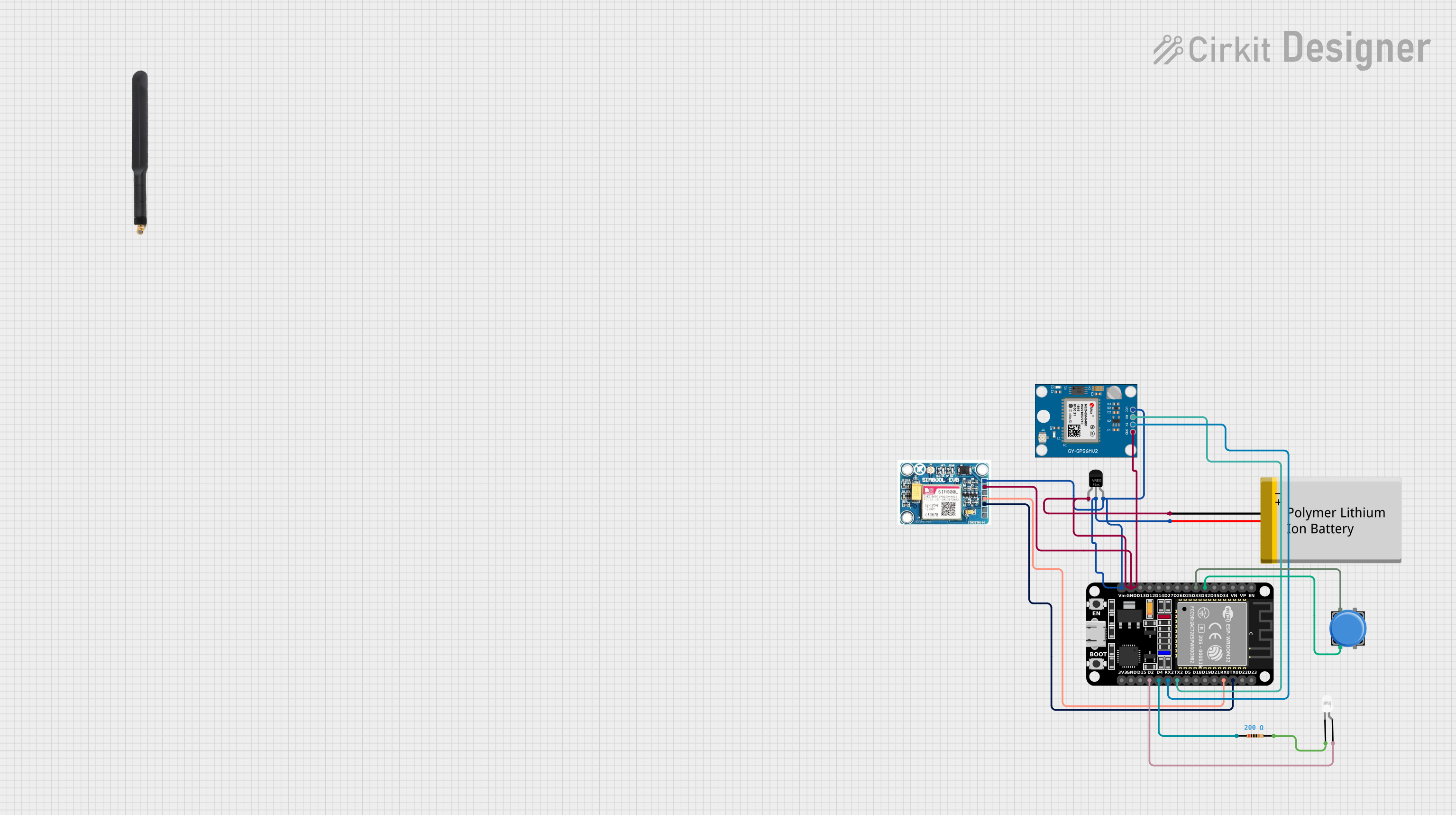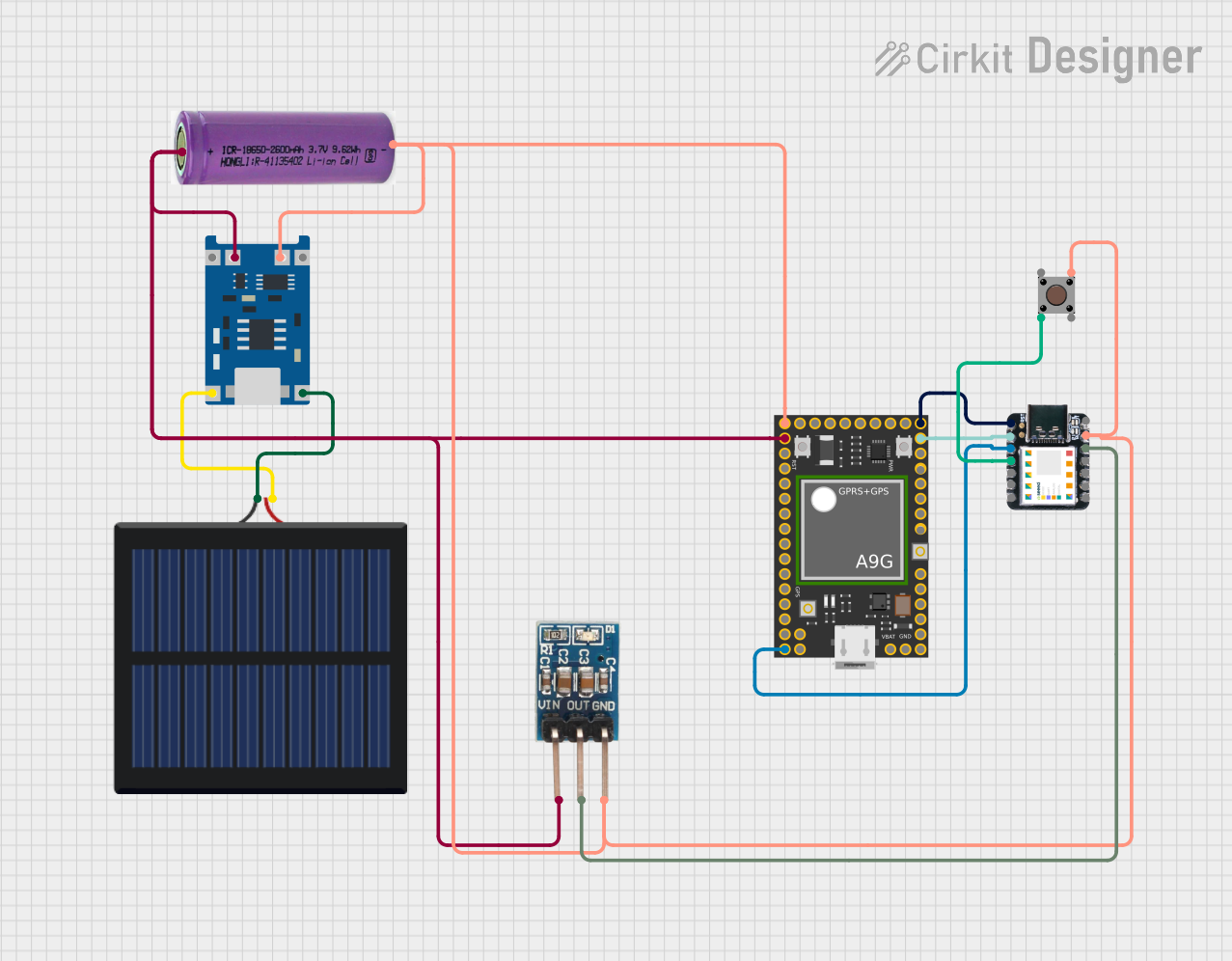
How to Use SIM A7672S 4G LTE + 2G + GNSS Development Board – With GNSS: Examples, Pinouts, and Specs

 Design with SIM A7672S 4G LTE + 2G + GNSS Development Board – With GNSS in Cirkit Designer
Design with SIM A7672S 4G LTE + 2G + GNSS Development Board – With GNSS in Cirkit DesignerIntroduction
The SIM A7672S 4G LTE + 2G + GNSS Development Board is a versatile and powerful module designed for IoT applications. Manufactured under SKU: KSTM1548 with part ID: SIMA7672S, this development board integrates 4G LTE and 2G connectivity along with GNSS (Global Navigation Satellite System) capabilities. It is ideal for projects requiring reliable communication, location tracking, and navigation.
Explore Projects Built with SIM A7672S 4G LTE + 2G + GNSS Development Board – With GNSS

 Open Project in Cirkit Designer
Open Project in Cirkit Designer
 Open Project in Cirkit Designer
Open Project in Cirkit Designer
 Open Project in Cirkit Designer
Open Project in Cirkit Designer
 Open Project in Cirkit Designer
Open Project in Cirkit DesignerExplore Projects Built with SIM A7672S 4G LTE + 2G + GNSS Development Board – With GNSS

 Open Project in Cirkit Designer
Open Project in Cirkit Designer
 Open Project in Cirkit Designer
Open Project in Cirkit Designer
 Open Project in Cirkit Designer
Open Project in Cirkit Designer
 Open Project in Cirkit Designer
Open Project in Cirkit DesignerCommon Applications and Use Cases
- IoT Devices: Smart meters, industrial monitoring, and remote sensors.
- Asset Tracking: Real-time location tracking for vehicles, goods, or equipment.
- Navigation Systems: GNSS-based navigation for drones, robots, and vehicles.
- Smart Agriculture: Remote monitoring and control of agricultural equipment.
- Emergency Systems: Communication and location tracking in disaster management.
Technical Specifications
Key Technical Details
| Parameter | Specification |
|---|---|
| Module | SIM A7672S |
| Cellular Connectivity | 4G LTE, 2G |
| GNSS Support | GPS, GLONASS, BeiDou, Galileo, QZSS |
| Operating Voltage | 3.4V to 4.2V (Typical: 3.8V) |
| Power Consumption | Idle: ~1.5mA, Active (LTE): ~500mA, Peak: ~2A |
| Communication Interfaces | UART, USB 2.0, GPIO, I2C, SPI |
| Operating Temperature | -40°C to +85°C |
| Dimensions | 30mm x 30mm x 2.9mm |
| Antenna Interfaces | LTE Main, LTE Diversity, GNSS |
| Certifications | CE, FCC, RoHS |
Pin Configuration and Descriptions
| Pin Name | Pin Number | Description |
|---|---|---|
| VCC | 1 | Power supply input (3.4V to 4.2V) |
| GND | 2 | Ground connection |
| TXD | 3 | UART Transmit Data |
| RXD | 4 | UART Receive Data |
| USB_D+ | 5 | USB Data Positive |
| USB_D- | 6 | USB Data Negative |
| GNSS_TXD | 7 | GNSS UART Transmit Data |
| GNSS_RXD | 8 | GNSS UART Receive Data |
| GPIO1 | 9 | General Purpose Input/Output 1 |
| GPIO2 | 10 | General Purpose Input/Output 2 |
| RESET | 11 | Reset pin (active low) |
| PWRKEY | 12 | Power key to turn the module on/off |
| ANT_MAIN | 13 | Main LTE antenna interface |
| ANT_DIV | 14 | LTE diversity antenna interface |
| ANT_GNSS | 15 | GNSS antenna interface |
Usage Instructions
How to Use the Component in a Circuit
- Power Supply: Connect the VCC pin to a regulated 3.8V power source and GND to ground.
- Antenna Connections: Attach appropriate antennas to the ANT_MAIN, ANT_DIV, and ANT_GNSS interfaces for LTE and GNSS functionality.
- UART Communication: Use the TXD and RXD pins to communicate with a microcontroller or PC via UART.
- USB Interface: Connect USB_D+ and USB_D- to a USB host for data communication or firmware updates.
- Power Control: Use the PWRKEY pin to turn the module on or off. Pull the pin low for at least 1 second to power on the module.
- GNSS Functionality: Use the GNSS_TXD and GNSS_RXD pins to receive GNSS data.
Important Considerations and Best Practices
- Power Supply: Ensure the power supply can handle peak currents of up to 2A to avoid instability.
- Antenna Placement: Place antennas away from noisy components to improve signal quality.
- Heat Management: If operating in high-temperature environments, consider adding heat dissipation measures.
- Firmware Updates: Regularly update the module firmware to ensure compatibility and performance.
Example: Connecting to an Arduino UNO
Below is an example of how to interface the SIM A7672S module with an Arduino UNO for basic communication:
Circuit Connections
| SIM A7672S Pin | Arduino UNO Pin |
|---|---|
| TXD | RX (Pin 0) |
| RXD | TX (Pin 1) |
| GND | GND |
| VCC | External 3.8V |
Arduino Code
#include <SoftwareSerial.h>
// Define RX and TX pins for SoftwareSerial
SoftwareSerial simModule(10, 11); // RX = Pin 10, TX = Pin 11
void setup() {
// Initialize serial communication with the module and the PC
Serial.begin(9600); // Communication with PC
simModule.begin(9600); // Communication with SIM A7672S module
Serial.println("Initializing SIM A7672S module...");
delay(1000);
// Send an AT command to check communication
simModule.println("AT");
}
void loop() {
// Check for data from the module
if (simModule.available()) {
String response = simModule.readString();
Serial.println("Module Response: " + response);
}
// Check for data from the PC
if (Serial.available()) {
String command = Serial.readString();
simModule.println(command); // Send command to the module
}
}
Troubleshooting and FAQs
Common Issues and Solutions
Module Not Powering On
- Cause: Insufficient power supply.
- Solution: Ensure the power source provides a stable 3.8V and can handle peak currents of 2A.
No Response to AT Commands
- Cause: Incorrect UART connections or baud rate.
- Solution: Verify TXD and RXD connections and ensure the baud rate matches the module's default (9600 bps).
Poor GNSS Signal
- Cause: Antenna placement or environmental interference.
- Solution: Place the GNSS antenna in an open area with a clear view of the sky.
Intermittent LTE Connectivity
- Cause: Weak signal or improper antenna connection.
- Solution: Check the LTE antenna connection and ensure the module is in an area with good network coverage.
FAQs
Can the module operate on 5V?
- No, the module requires a power supply between 3.4V and 4.2V. Exceeding this range may damage the module.
What is the maximum baud rate supported?
- The module supports baud rates up to 115200 bps.
Does the module support SMS and voice calls?
- Yes, the SIM A7672S module supports SMS, voice calls, and data communication.
Can I use the module without an external microcontroller?
- Yes, the module can be controlled via a PC using a USB-to-UART adapter.
By following this documentation, users can effectively integrate the SIM A7672S module into their projects and troubleshoot common issues.